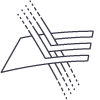
Serdeczenie zapraszamy do udziału w 23. edycji European Conference on Integrated Optics odbywającej się w dniach 4-5 maja 2022 w Mediolanie.
The European Conference on Integrated Optics (ECIO) is the largest and longest-running event dedicated to cutting-edge research and technological development in integrated photonics and nanophotonics, spanning from advanced materials and technologies to novel device concepts and emerging applications.
4-6 May, 2022 – Milano, Italy
Call for Papers ECIO 2022
ECIO has now reached its 23rd edition. ECIO 2022 celebrates the 40th anniversary!
Join us in Milano for a full in presence ECIO edition!
The conference focuses on leading edge research on integrated optics, opto-electronics and nanophotonics. The meeting gathers experts from academia and industry to show their latest scientific and technical results, and to showcase their products and services. The application scope is broad: it ranges from telecom/datacom to optical imaging, sensing, metrology, up to more disruptive areas like quantum and neuromorphic computing.
The most recent advances in the wide-ranging field of photonic devices are among the main features of the conference. Conference topics cover waveguide theory and novel waveguide concepts; devices, photonic integrated circuits (PICs) and their applications; technology platforms and materials, such as silicon-based photonics and III-V optoelectronics; circuit design models and tools; assembly, packaging and testing; PIC exploitation in classical and emerging applications.
Deadlines
Deadline for paper submission – 14 February 2022 – 23:59 CET
Author notification – March 13
Early Registration – until April 4
Late Registration – until April 29
Location
Politecnico di Milano and other locations for social events
News, info, registration and details on https://www.ecio-conference.org
Ten adres pocztowy jest chroniony przed spamowaniem. Aby go zobaczyć, konieczne jest włączenie w przeglądarce obsługi JavaScript.
Topics
Conference topics include, but are not limited to:
Integrated photonic technologies and platforms: Silicon photonics | III-V optoelectronics | Compound semiconductors | Dielectric and polymer photonics | LiNbO3 and other electro-optic materials | Plasmonics | Novel material integration | Visible range, near-, mid-, far-infrared and THz waveguides and technologies | Bio-photonic platforms for integrated devices | Membrane photonics and photonic MEMs | Wafer and die bonding technologies | Hybrid & heterogeneous integration | Electronic-photonic convergence | Production methods and (generic) foundry concepts
Devices and Integrated Circuits: Waveguides, waveguide devices and on chip diffractive optical elements | Functional devices: programmable filters, switches, buffers, large-scale circuits, polarization management | Active devices: lasers and laser arrays, amplifiers and detectors | Modulators: ultrafast, nano and low energy | Nonlinear devices: wavelength converters, mixers and regenerators | Plasmonic waveguides and devices | Assembly, packaging and hybrid integration techniques | Optical connectivity – coupling techniques to photonic integrated circuits | Electronic connectivity | Flip-chip bonding | Testing and characterization techniques of waveguides and PICs
Novel physical insights and materials: Devices beyond conventional limits | Enhanced light-matter interactions | Inverse and computer aided design | Computational analysis and methods | Ultra compact and nanoscale devices | Quantum and high precision photonics | Novel devices based on magneto-optic, piezo-electric, and ferroelectric materials | Nanophotonics, photonic crystals, subwavelength and metamaterials devices | Raman and Brillouin gain | Novel modeling and simulation techniques | Unconventional materials for photonics | 2D materials and phase change materials | Energy-efficient photonics materials | Non-linear materials and effects
Applications of PICs: Telecom and data communications, optical interconnects | Control layer for PICs | Programmable photonic circuits, neuromorphic, photonic processors | Biological, chemical and other sensing transducers | Optomechanical devices and micro- and nano-electro-mechanical systems | Spectroscopy | Quantum computing and PICs for quantum communications | Free-space optical communications, LiDAR | Photonic A/D conversion, logic, memories | Nonlinear functionalities | Frequency combs and supercontinuum generation | Generation, manipulation and detection of single photons in PICs


